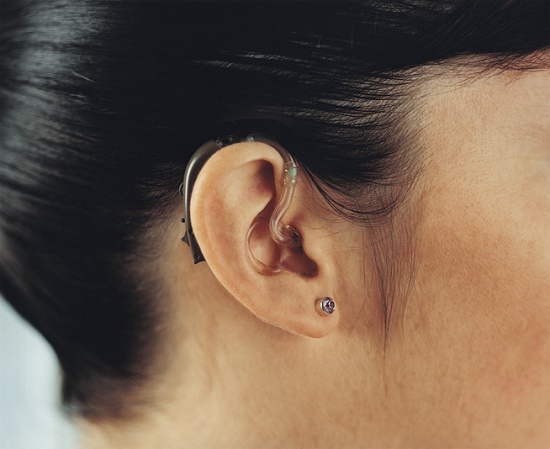
Have you ever had difficulties hearing in a crowded room or restaurant but can hear just fine at home? Do you have particular difficulty hearing higher-pitched voices or TV dialogue?
If so, you may have hearing loss, and hearing aids might be able to help.
But how do hearing aids work exactly? Are they basic amplifiers, or something more complex?
This week we’ll be evaluating how hearing aids work and how they are a bit more advanced than many people recognize. But first, let’s begin with how normal hearing works.
How Normal Hearing Works
The hearing process starts with sound. Sound is simply a type of energy that travels in waves, like ripples in a lake. Things produce sound in the environment when they trigger vibrations in the air, and those vibrations are eventually captured and sent to the ear canal by the outer ear.
Immediately after passing through the ear canal, the sound vibrations strike the eardrum. The eardrum then vibrates, creating and amplifying the original signal which is then transferred by the middle ear bones to the snail-shaped organ of the middle ear referred to as the cochlea.
The cochlea is full of fluid and small nerve cells known as cilia. The vibrations transported from the middle ear bones stir the fluid and stimulate the cilia. The cilia then conduct electrical signals to the brain and the brain interprets the signals as sound.
With most instances of noise-induced hearing loss, there is injury to the cilia. So, the incoming signal to the brain is compromised and sounds seem softer or muffled. But not all frequencies are uniformly impaired. Frequently, the higher-pitched sounds, including speech, are impacted to a greater degree.
In a noisy setting, like a restaurant, your ability to hear speech is reduced because your brain is receiving a weakened signal for high-frequency sounds. Simultaneously, background noise, which is low-frequency, is getting through normally, drowning out the speech.
How Hearing Aids Can Help
You can see that the solution is not simply amplifying all sound. If you were to do this, you’d just continue to drown out speech as the background noise grows to be louder relative to the speech sounds.
The solution is selective amplification of only the frequencies you have a hard time hearing. And that is only feasible by having your hearing professionally examined and your hearing aids professionally programmed to magnify these select frequencies.
How Hearing Aids Precisely Amplify Sound
Present day hearing aids consist of five internal parts: the microphone, amplifier, speaker, battery, and computer chip. But hearing aids are not just straightforward amplifiers—they’re intricate electronic devices that change the properties of sound.
This takes place by way of the computer chip. Everyone’s hearing is unique, like a fingerprint, and therefore the frequencies you need amplified will differ. The astounding part is, those frequencies can be ascertained precisely with a professional hearing test, known as an audiogram.
Once your hearing professional has these numbers, your hearing aid can be programmed to enhance the frequencies you have the most trouble with, improving upon speech recognition in the process.
Here’s how it works: the hearing aid picks up sound in the environment with the microphone and transmits the sound to the computer chip. The computer chip then converts the sound into digital information so that it can distinguish between different frequencies.
Then, dependent on the programmed settings, the high-frequency sounds are enhanced, the low-frequency background sounds are suppressed, and the enhanced sound is served to your ear via the speaker.
So will your hearing go back perfectly to normal?
While your hearing will not completely return to normal, that shouldn’t stop you from obtaining substantial gains in your hearing. For most individuals, the amplification delivered is all they require to comprehend speech and partake in effective and effortless communication.
Think of it this way. If your eye doctor told you they could enhance your vision from 20/80 to 20/25, would you forfeit prescription glasses because you couldn’t get to 20/20? Of course not; you’d be able to function just fine with 20/25 vision and the improvement from 20/80 would be substantive.
Are you set to find out the gains you can achieve with modern hearing aids? Give us a call today!
